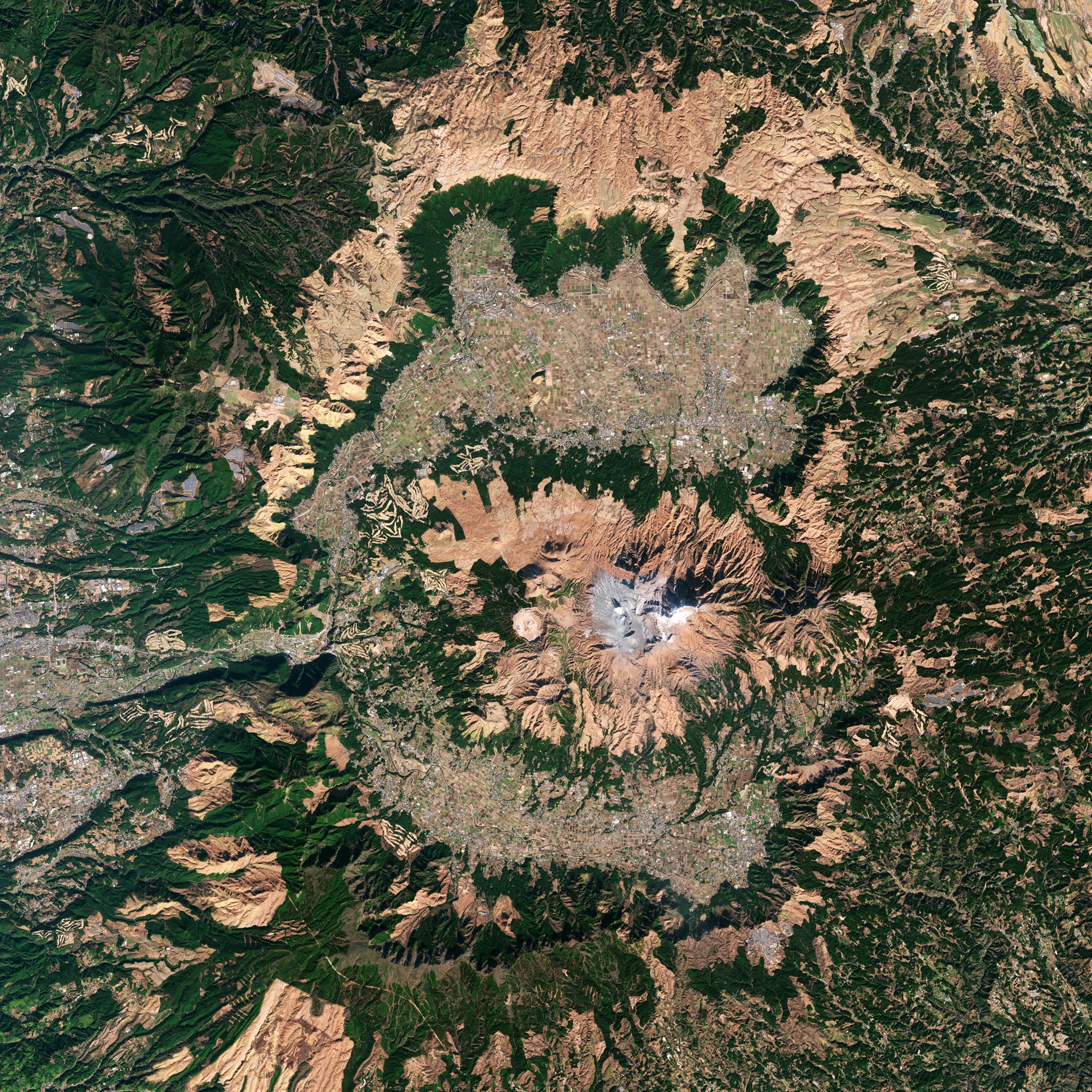Mount Aso, the largest active volcano in Japan, is featured in this image captured on January 1, 2022, by the Copernicus Sentinel-2 mission. Credit: Contains modified Copernicus Sentinel data (2022), processed by ESA, CC BY-SA 3.0 IGO
Mount Aso, the largest active volcano in Japan, is featured in this image captured by the Copernicus Sentinel-2 mission.
Mount Aso, located in the Kumamoto Prefecture on the nation’s southernmost main island of Kyushu, rises to a height of 1592 meters (5,223 feet). The Aso Caldera is one of the world’s biggest calderas, stretching around 120 km (75 miles) in circumference, 25 km (16 miles) north to south, and 18 km (11 miles) east to west.
The caldera was formed during four major explosive eruptions that occurred between 90,000 and 270,000 years ago. This resulted in massive pyroclastic flows and volcanic ash that blanketed much of the Kyushu region and even reached the neighboring Yamaguchi Prefecture.
The caldera is surrounded by five peaks known collectively as Aso Gogaku: Nekodake, Takadake, Nakadake, Eboshidake, Kishimadake. Nakadake is the only active volcano at the center of Mount Aso and is the main attraction in the region. The volcano goes through cycles of activity. At its calmest, the crater fills with a lime green lake that gently steams, but as activity increases, the lake boils off and disappears. The volcano has been erupting sporadically for decades, most recently in 2021, which has led to the number of visitors drop in recent years.
Not far from the crater lies Kusasenri: a vast grassland inside the mega crater of Eboshidake. Active just over 20,000 years ago, the crater has been filled with volcanic pumice from other eruptions, with magma still brewing a few kilometers below. Rainwater often accumulates on the plain forming temporary lakes. The pastures are used for cattle raising, dairy farming, and horse riding.
One of the nearest populated cities is Aso, visible in the image around 8 km (5 miles) north of the volcano. It has a population of around 26,000 people.
There are 110 active volcanoes in Japan, of which 47 are monitored closely as they have erupted recently or shown worrying signs including seismic activity, ground deformation, or emissions of large amounts of smoke.
Satellite data can be used to detect the slight signs of change that may foretell an eruption. Once an eruption begins, optical and radar instruments can capture the various phenomena associated with it, including lava flows, mudslides, ground fissures, and earthquakes. Atmospheric sensors on satellites can also identify the gases and aerosols released by the eruption, as well as quantify their wider environmental impact.
This image is also featured on the Earth From Space video program embedded above.

